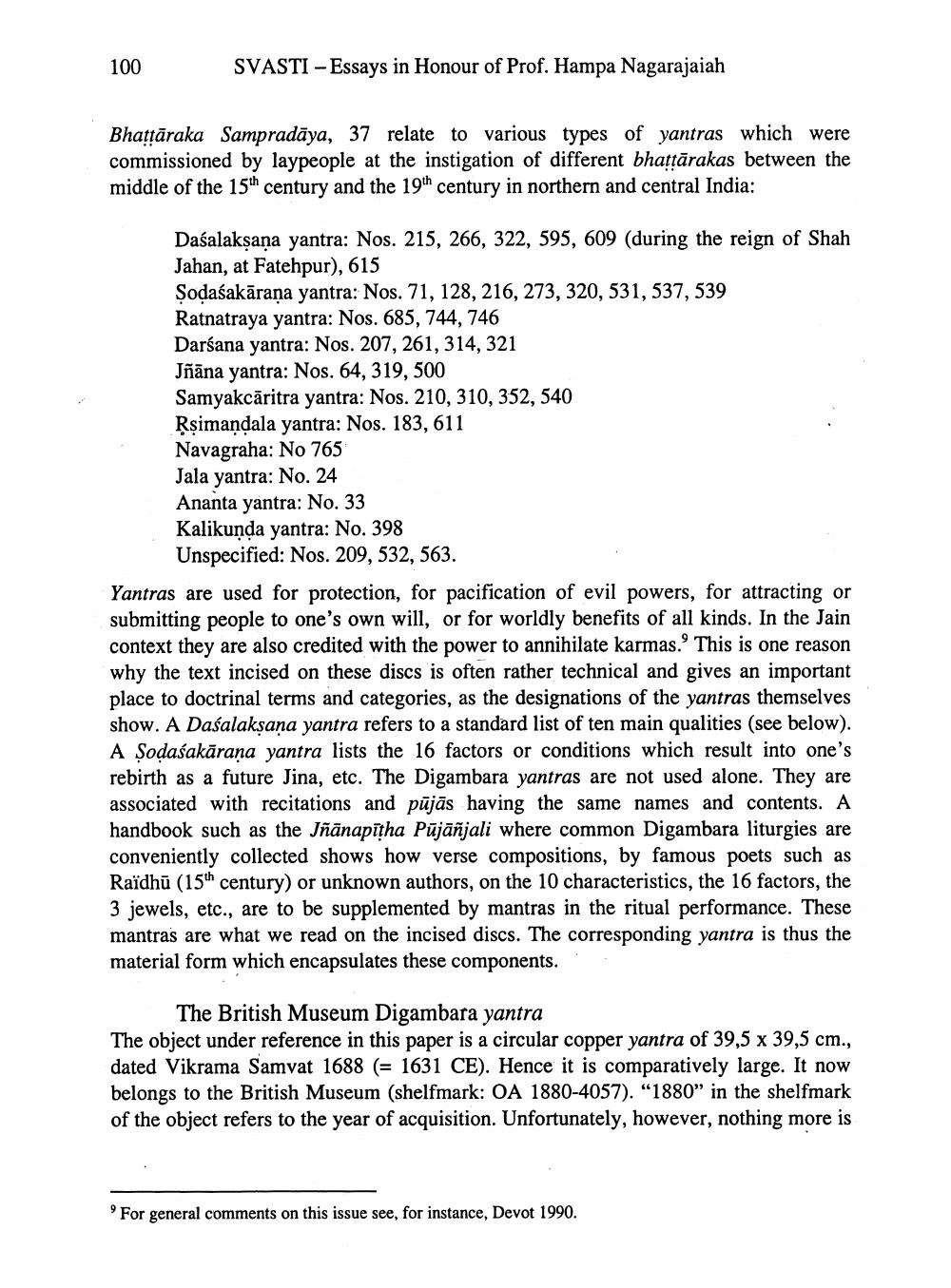________________
100
SVASTI -Essays in Honour of Prof. Hampa Nagarajaiah
Bhattāraka Sampradāya, 37 relate to various types of yantras which were commissioned by laypeople at the instigation of different bhattārakas between the middle of the 15th century and the 19th century in northern and central India:
Daśalaksaņa yantra: Nos. 215, 266, 322, 595, 609 (during the reign of Shah Jahan, at Fatehpur), 615 Sodaśakārana yantra: Nos. 71, 128, 216, 273, 320, 531, 537, 539 Ratnatraya yantra: Nos. 685, 744, 746 Darśana yantra: Nos. 207, 261, 314, 321 Jñāna yantra: Nos. 64, 319,500 Samyakcäritra yantra: Nos. 210, 310, 352, 540 Rsimandala yantra: Nos. 183, 611 Navagraha: No 765 Jala yantra: No. 24 Ananta yantra: No. 33 Kalikunda yantra: No. 398
Unspecified: Nos. 209,532, 563. Yantras are used for protection, for pacification of evil powers, for attracting or submitting people to one's own will, or for worldly benefits of all kinds. In the Jain context they are also credited with the power to annihilate karmas. This is one reason why the text incised on these discs is often rather technical and gives an important place to doctrinal terms and categories, as the designations of the yantras themselves show. A Daśalaksana yantra refers to a standard list of ten main qualities (see below). A Sodaśakārana yantra lists the 16 factors or conditions which result into one's rebirth as a future Jina, etc. The Digambara yantras are not used alone. They are associated with recitations and pājās having the same names and contents. A handbook such as the Jñānapītha Pūjāñjali where common Digambara liturgies are conveniently collected shows how verse compositions, by famous poets such as Raïdhū (15th century) or unknown authors, on the 10 characteristics, the 16 factors, the 3 jewels, etc., are to be supplemented by mantras in the ritual performance. These mantras are what we read on the incised discs. The corresponding yantra is thus the material form which encapsulates these components.
The British Museum Digambara yantra The object under reference in this paper is a circular copper yantra of 39,5 x 39,5 cm., dated Vikrama Samvat 1688 (= 1631 CE). Hence it is comparatively large. It now belongs to the British Museum (shelfmark: OA 1880-4057). "1880” in the shelfmark of the object refers to the year of acquisition. Unfortunately, however, nothing more is
'For general comments on this issue see, for instance, Devot 1990.




